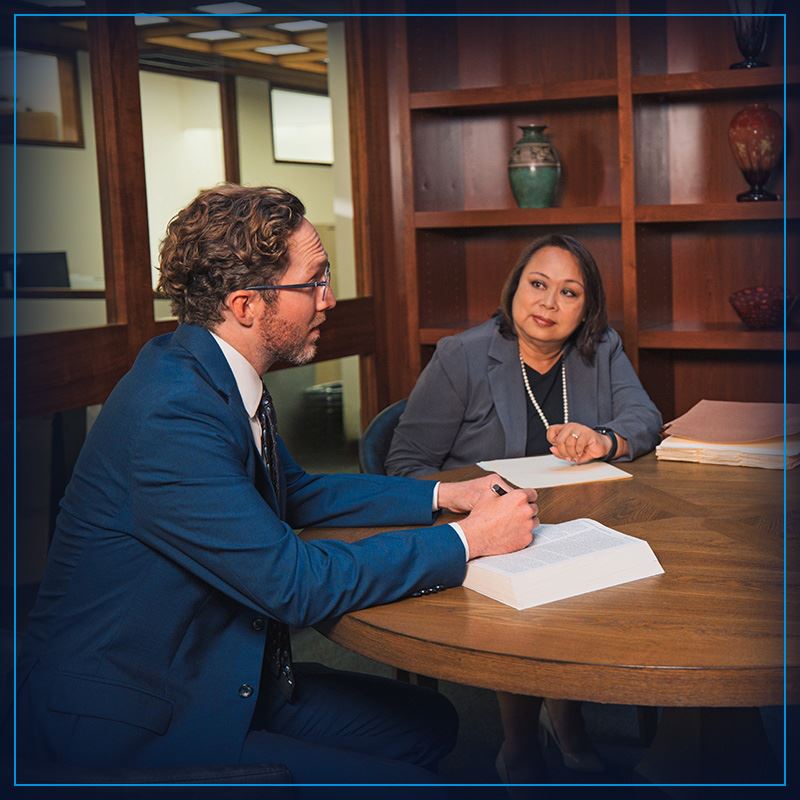
HAWAII BRACHIAL PLEXUS INJURY ATTORNEYS
SERVING HONOLULU & THE HAWAIIAN ISLANDS FOR MORE THAN 40 YEARS
Injuries to the brachial plexus—a group of nerves originating in the neck and extending down through the shoulder and into the arm, wrist, and hand—can result from a number of causes during the birth process. Brachial plexus injuries can cause temporary or permanent paralysis, depending on the extent of trauma to the nerves. It can cause conditions known as Erb’s palsy and Klumpke’s palsy, for which there are no known cures.
Brachial plexus injuries most commonly occur during difficult deliveries. In some cases, the infant’s shoulder becomes lodged against the mother’s pubic bone, causing stretching or tearing of the brachial plexus nerves. Your doctor should know how to recognize the signs of this birth complication and know how to handle it. Mismanagement of a complication or a failure to recommend a C-section in a high-risk pregnancy may constitute medical malpractice and provide grounds for a lawsuit.
The Hawaii brachial plexus injury attorneys at Davis Levin Livingston have extensive experience in litigation relating to brachial plexus injuries. If you or a loved one have sustained any type of injury during the birth process, an experienced attorney can assist you in pursuing the compensation to which you are entitled.

For a free review of your case, call (808) 740-0633 or contact Davis Levin Livingston online.
Types of Brachial Plexus Injuries
In the majority of cases of obstetric brachial plexus injuries to an infant, the upper nerves are affected. The condition, known as Erb’s palsy, results in loss of mobility in the shoulder. However, some infants may retain the ability to move their fingers.
With Klumpke’s palsy, the lower brachial plexus is injured, resulting in loss of motion in the hand and wrist. When both upper and lower nerves stretch to the point of injury, the resulting condition is known as a total brachial plexus birth palsy.
Four general categories of injuries to nerves can occur as the result of brachial plexus injuries during birth, and all can occur concurrently in the same child:
- Neurapraxia: This type of injury involves the stretching, not tearing, of the nerves and will typically heal on its own within approximately three months.
- Neuroma: This type of injury involves more severe stretching of the nerves that leads to damaged nerve fibers and scar tissue, which may press on healthy nerve tissue.
- Rupture: This type of injury involves a serious tearing of the nerve.
- Avulsion: This is the most serious type of nerve injury and occurs when the nerve is actually torn from the spinal cord. Avulsion injuries cannot be repaired, but some arm function may be restored by using nerves from a different muscle.
Brachial Plexus Injury Symptoms
All types of brachial plexus injuries are marked by loss of feeling, weakness, and complete or partial paralysis in one arm. They will vary in severity, however. The seriousness of the injury affects the recommended treatments and the degree to which a patient may recover.
In obstetric cases, a pediatrician typically makes a diagnosis based on a physical examination. The doctor may prescribe an ultrasound or another imaging method to determine the extent of damage to joints and bones in the shoulder and neck. This type of injury in an infant or child can impair the growth of the shoulder.
In more serious cases, nerves may sustain permanent damage, including rupture. In the most serious type of injury, avulsion, the nerve is torn from the spinal cord at its root.
Such injuries can cause permanent disability, and patients with even seemingly minor injuries should seek medical attention immediately. Treatment within approximately six months of an injury is critical because delays can negatively affect the outcome of surgery.
Brachial Plexus Injury Treatment
In some cases, brachial plexus injuries heal without treatment. Many infants injured at birth recover by approximately three months of age. If your newborn has suffered an obstetric brachial plexus injury, your pediatrician should examine him or her frequently to ensure proper healing of the nerves.
For cases that do not heal on their own, recommended treatments include physical therapy and surgery. For Erb’s palsy, physical therapy may be required on a daily basis, and parents must manually work the infant’s muscles and joints using exercises prescribed by the pediatrician.
If the condition does not improve within the first six months, a doctor may suggest nerve surgery using specialized, small instruments and high-powered microscopes. Surgery usually does not fully relieve the results of the injury and may not help older infants.
Involve a Brachial Plexus Lawyer at Our Hawaii Law Firm
The site and severity of a brachial plexus injury will affect a patient’s chances of recovery. For avulsion and rupture injuries, timely surgery provides the only hope of recovery. Treatment can be extensive and expensive, and some children may require ongoing therapy or assistive devices. Our Hawaii brachial plexus injury lawyers are here to help you seek the financial compensation you need for your child’s complete and ongoing care. At Davis Levin Livingston, we know how to hold at-fault doctors, nurses, and other medical professionals accountable for their wrongdoing.
With a history of record-breaking verdicts and settlements that extends over 40 years, Davis Levin Livingston is here to provide effective, compassionate counsel. Call (808) 740-0633 today.


Four Decades of Record Breaking Victories
-
$15,000,000 Vacuum/Forceps Injury
The hospital improperly attempted to deliver a post-date baby using a traumatic second-stage vacuum extraction. This extraction and the delay in delivery resulted in permanent brain damage to the baby.
-
$9,975,000 Brain Injury
The hospital's failure to monitor an infant's rising bilirubin levels led to bilirubin encephalopathy and kernicterus, resulting in severe and permanent brain damage. A settlement of $9,975,000 was obtained.

Why Davis Levin Livingston?
-
Available by phone 24/7 & ready to help.
-
Secured tens of millions of dollars on behalf of our clients.
-
Highest malpractice judgment in U.S. history against a military hospital.
-
Includes an experienced medical team including a nursing staff to answer your questions.
-
Mark Davis and Mike Livingston have been recognized as some of the best lawyers in Hawaii.
-
Resources available to advance your expenses; no cost or fees unless Davis Levin Livingston wins your case.

Dedicated Legal Counsel You Can Count On
Helping Families throughout hawaii for over 40 years
-
"Professional, KIND, and understanding"
They are most professional, KIND, and understanding. Thank you Matt Winter for all your help.- Clare T. -
"We wouldn't have chosen any other team!"
Mathew Winter and the whole staff of Davis Levin Livingston guided us every step of the way and made sure we understood everything that was going on. They were always so welcoming and compassionate. Communication was never a problem and emails were answered super fast, especially when we had so many questions. They- Maariel -
"The absolute best firm in Hawaii. Compassion and professionalism at its best!"
Truly a wonderful experience with everyone at the firm. I can't thank you enough for helping provide closure for my family and me during this process. The absolute best firm in Hawaii. Compassion and professionalism at its best!- Daniel -
"After doing extensive research I knew that Davis Levin Livingston was the firm for me due to the success they have had in cases like mine."
After doing extensive research I knew that Davis Levin Livingston was the firm for me due to the success they have had in cases like mine. What surprised me was their personal touch. In the 3- Anthony

Did you know?
you are not alone in this.
-
7 OUT OF 1,000 NEWBORNS ARE DIAGNOSED WITH A BIRTH INJURY.
-
IN A YEAR, 157,000 MOTHERS AND CHILDREN SUFFERED POTENTIALLY PREVENTABLE INJURIES.
-
THE LIFETIME COSTS OF BIRTH INJURIES CAN REACH TENS OF MILLIONS OF DOLLARS.
-
ON AVERAGE 28,000 BABIES ARE BORN WITH A BIRTH INJURY EVERY YEAR.







.1).1).2401101010550.png)





.1910211111556.png)

.1).1910211114162.png)
.1910211111550.png)